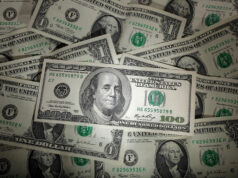PHL unlikely to achieve upper middle-income status this year
THE Philippines is unlikely to reach upper middle-income country status this year, as the coronavirus pandemic takes its toll on the economy.
National Economic and Development Authority (NEDA) Acting Secretary Karl Kendrick T. Chua said he is still hopeful that they could meet the goal this year or in 2021, after the statistics agency began using 2018 instead of 2000 prices as the base for measuring the gross domestic product (GDP).
“I hope [the goal is still] attainable this year or next year with our revised GDP, but COVID-19 (coronavirus disease 2019) might delay it a bit,” Mr. Chua said in a mobile phone message on Saturday.
The Philippine Statistics Authority (PSA) earlier said the rebasing was done to ensure that economic activities of new industries such as information and communication technologies (ICT) and accommodation and food services are captured.
“The GNI (gross national income) was adjusted (during the revision) because of change in the estimation of the compensation inflow to follow the UN (United Nations) system of national accounts,” PSA Chief Claire Dennis S. Mapa said in a text message yesterday.
The World Bank defines an upper middle-income economy as having a gross national income (GNI) per capita of between $3,996 and $12,375. Among those considered as upper middle-income economies are China, Malaysia and Thailand.
The Philippines had a per capita GNI of $3,830, according to World Bank data as of 2018. This falls within the $1,026-$3,995 bracket of lower-middle income economies, which include Vietnam, Myanmar and Timor Leste.
The Philippine economy shrank by 0.2% in the first quarter, amid the Taal Volcano eruption in January and the Luzon-wide lockdown in mid-March. This was a reversal from the 6.7% and 5.7% growth recorded in the previous quarter and in the first quarter of 2019, respectively.
First-quarter data showed GNI — the sum of the nation’s GDP and net income received from overseas — declined by 0.6% compared with 5.8% growth in the previous quarter and 5% in 2019’s comparable three months.
Before the pandemic, then NEDA Secretary Ernesto M. Pernia said the Philippines could graduate to an upper-middle income status by the fourth quarter this year.
Now, the economic team is projecting flat growth or a 1% contraction this year.
However, Mr. Chua, who took over when Mr. Pernia resigned last month, said the plan to achieve this goal faces a “temporary setback” due to the pandemic.
“Dahil sa unexpected crisis natin dulot ng COVID-19, baka ma-delay po ’yan. Lahat ng bansa kasi ay nakikita po natin ’yung economic growth ay humina o nag- contract so I think, temporary setback lang ito so susubukan natin humabol. If not next year, by 2022, ’yan naman po ’yung ating pinangako (Because of the unexpected crisis caused by the COVID-19 pandemic, the plan might be delayed. All countries across the globe are slowing down or are contracting, so I think this is just a temporary setback and we will try to catch up next year or by 2022. That’s what was promised),” Mr. Chua said in a Laging Handa briefing on Saturday.
Rizal Commercial Banking Corp. (RCBC) Chief Economist Michael L. Ricafort said any delay in achieving the goal of becoming an upper middle-income economy is “understandable” as the global economy faces a crisis.
“With the improvement to upper middle-income status by then, this would fundamentally give the country a better chance of also moving up further to A credit ratings,” Mr. Ricafort said in an e-mail at the weekend.
The government is eyeing to secure an “A” long-term credit rating by 2022 from its current “BBB+,” while looking to graduate to the upper-middle income status, when the Philippines will eventually lose the concessional loans it now enjoys.
However, even an “A” credit rating looks dim after Fitch Ratings downgraded its outlook for the Philippines to “stable” just three months after it gave a “positive” outlook, citing “deterioration in the Philippines’ near-term macroeconomic and fiscal outlook.”
The credit rater maintained its “BBB” rating for the country and projects a 1% contraction for the economy this year.
“At some point further into the future, especially after recovering from the COVID-19 economic losses, the Philippines may be in a much better economic, fiscal, and credit position to access loans from commercial and multilateral sources even with reduced concessions,” Mr. Ricafort said. — Beatrice M. Laforga



